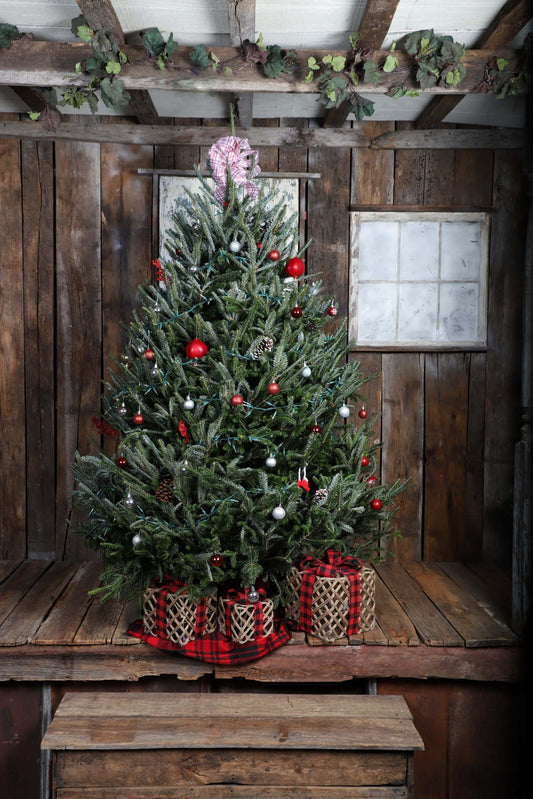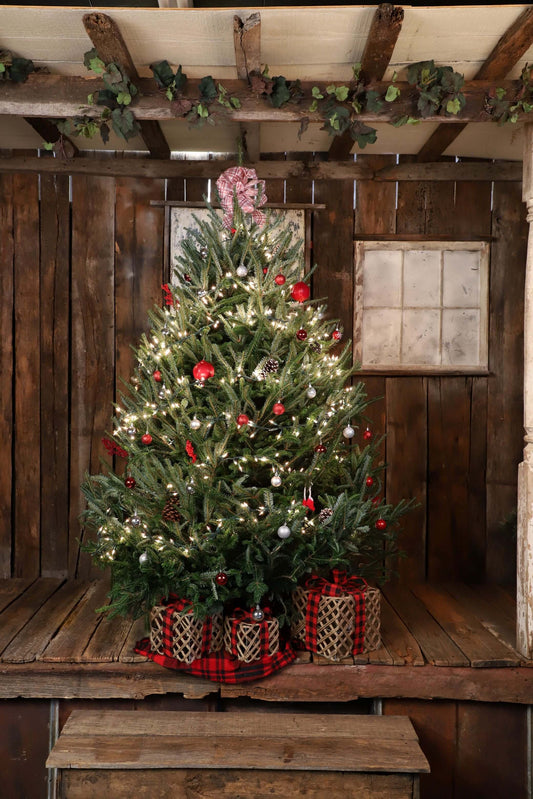Christmas Tree Delivery Timings for Retailers
The holiday season is a peak time for retailers when they need fresh Christmas trees and greenery.
With proper Christmas tree delivery timing, retailers can provide customers with the freshest products and drive sales to the maximum level.
Knowing when to receive fresh Christmas trees and planning for fresh greenery delivery to retailers c an be the difference between holiday success and holiday failure.
This blog will walk wholesale customers through Christmas inventory timing best practices for retail stores, wholesale Christmas tree delivery, and Christmas season delivery planning.
The objective is to provide an early merchandising balance with product longevity and present intelligent strategies to manage big-ticket orders.
Let History Sales Data Be Your Guide
Utilizing historical sales data is one of the best practices to ascertain the ideal time to stock Christmas trees. Keep the following in mind:
- Examine past years' buying patterns to determine peak times for purchasing.
- Be aware that various areas and audiences might have distinct timing patterns.
- Steer clear of installing displays too early to avoid product deterioration.
For instance, stores in northern states usually experience peak demand sooner than those in the south because icy weather induces early decorating.
Knowing when retailers receive Christmas trees from previous sales prevents in-advance displays that cause dehydrated, non-saleable trees.
A store in Minnesota could receive wholesale Christmas tree delivery early in November, whereas a Florida store would delay receiving it until mid-November for freshness purposes.
Historical sales figures also show how consumer trends change from year to year. For example, the increased use of online ordering and home delivery has altered when certain customers tend to shop.
Merchants who are keeping up with these trends can tailor their Christmas stock timing for stores in response without compromising product freshness.
Balance Early Sales with Product Freshness
Balancing initial sales and product freshness is a delicate balancing act. Too early exposure to trees can cause needle drop and unhappy customers.
Store greenery in cool, shaded conditions to make Christmas trees and greenery last longer.
- Store greenery in cool, shaded areas
- Properly hydrate trees with misting systems or water reservoirs.
- Rotate stock regularly to maintain the freshest trees on display.
Retailers who master this balance can confidently plan when to receive fresh Christmas trees without sacrificing quality. Proper care helps maintain freshness, freshness even if trees are displayed earlier than usual.
For instance, a store may get an advance shipment to sell to the first buyers but hold the trees in a shaded, moist section until the prime display.
This method enables early merchandising yet maintains product quality. Moreover, rotating inventory causes older stock to be sold before it can become waste.
Stagger Shipments for Large Orders
For large Christmas stocking needs by stores , staggering shipments is convenient and efficient. The advantages are:
- Dividing big orders into two or more shipments (one early, one mid-season).
- Guaranteed consistency of freshness and less spoilage.
- Adaptable inventory management to accommodate changing demand.
- Steering clear of unsold, aged inventory at big-sale periods.
For instance, a retailer who places 1,000 trees may take delivery of 600 in late November and 400 in early December.
This approach enables improved delivery planning for the Christmas season and addresses the optimal delivery window for holiday greens.
Staggered shipments also facilitate storage space and cash management. Retailers can spread costs and space needs over time rather than paying for and warehousing all stock simultaneously.
This flexibility is particularly valuable for smaller stores or those with minimal storage space.
When to Start Selling: Key Dates to Watch
Timing sales with consumer behavior is paramount to success. Key points to remember:
- The weekend before Thanksgiving is the prime kickoff for tree and greenery sales.
- Many customers begin decorating immediately after Thanksgiving.
- Early December remains a popular time for stocking fresh trees for the holidays.
The Saturday before Thanksgiving is generally the optimal time to sell Christmas trees and foliage.
Most consumers hold off on decorating until after Thanksgiving, so coordinating the Christmas tree delivery date with this action is crucial.
Beginning sales too early can result in product deterioration, while beginning too late will cause early customers to be lost.
Christmas inventory timing for retail stores planned near this important date allows for optimized sales and customer satisfaction.
To illustrate, a few stores start offering early bird sales in late November to reach early shoppers while preserving product freshness.
Christmas Season Delivery Planning: Practical Advice
Well-planned deliveries are essential to prevent last-minute problems and maintain fresh inventory. Keep the following tips in mind:
- Finalize wholesale Christmas tree delivery times far in advance.
- Coordinate with suppliers closely to make sure shipments coincide with sales peaks.
- Utilize delivery tracking and communication tools to ensure logistics run smoothly.
Early confirmation of delivery dates enables retailers to plan for receiving and displaying new trees.
Coordinating with suppliers guarantees that shipments arrive during the optimal delivery time for holiday greens.
Delivery tracking systems assist in tracking shipments and revising plans in case of delays.
For instance, Christmas tree farms and distributors often transport in temperature-controlled trailers or covered trucks to ensure freshness when moving.
Retailers communicating regularly with their distributors can project arrival times and schedule labor and display arrangements accordingly.
Examples and Industry Insights
Planning ideas come from industry research and data:
According to the National Christmas Tree Association,
- Most trees are cut and shipped in late November through early December.
- Store owners in warmer climates often require earlier deliveries to counteract quicker needle loss.
- Research indicates that trees purchased on the Saturday following Thanksgiving provide the optimum combination of freshness and selection.
For example, because of climate variations, a Texas retailer would receive trees before a Michigan retailer.
Studies also show that shoppers who buy the weekend after Thanksgiving experience the freshest trees and best assortment.
This information validates the suggestion of coordinating Christmas tree delivery timing with consumer purchase patterns and local requirements.
Another factor is the compressed shipping season. Peak shipping happens in the weeks before Thanksgiving and extends through December, says the Pacific Northwest Christmas Tree Association.
Retailers need to be ready for heavy volume deliveries during this time and make arrangements accordingly.
The Final Words,
Precise Christmas tree delivery timing is critical to holiday retailing success. Referring to past sales data enables retailers to stage deliveries when consumers are likely to make purchases.
A balance between early sales and product freshness avoids needle loss and makes customers satisfied. Spreading out big orders ensures consistent freshness and minimizes waste.
Timed deliveries relative to major dates, such as the Saturday before Thanksgiving, synchronize inventory with demand from consumers.
By implementing these steps, retailers can maximize stocking times, guarantee fresh greenery delivery, reduce spoilage, and increase customer satisfaction.
This strategic planning enables wholesale buyers to stock fresh Christmas trees confidently and have a successful holiday season.

















